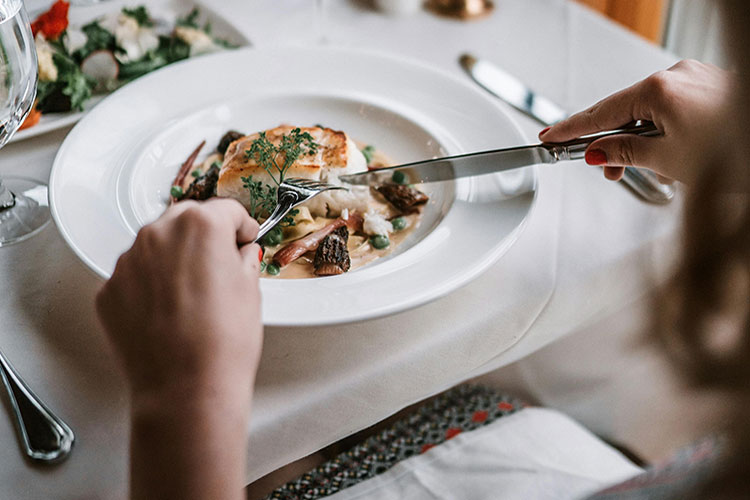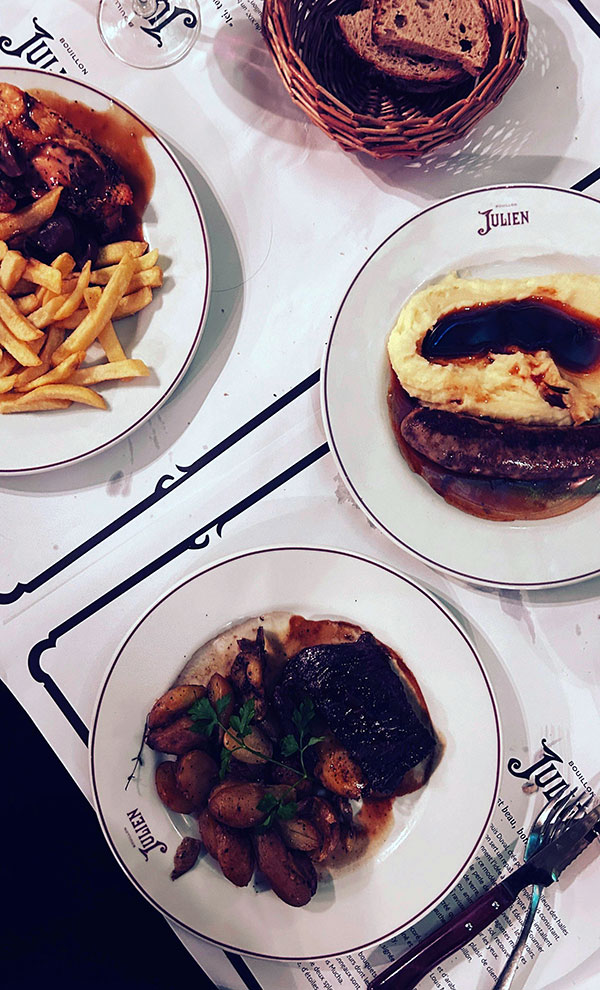Crash Course in International Dining Etiquette
LifeSkills Academy Blog
Check back often to find interesting information and updates.
Crash Course in International Dining Etiquette
Written by: Sandi MacCalla – Founder, LifeSkills Academy – 6/23/2025
From slurping noodles to mastering chopsticks, what’s normal in San Francisco might raise eyebrows in Milan. Dining abroad isn’t just about tasting new flavors—it’s about respecting traditions that shape the experience. Here’s your cheat sheet to avoid awkward moments at the table.
Europe: Fork Fumbles
 Ever noticed Europeans keep their forks in their left hand through the whole meal … unlike Americans who switch utensils mid-bite – Zig-Zag style? The Continental style—dating back to the 18th century—keeps the fork steady, making the Zig-Zag look like a silverware juggling act. I once had a French friend laugh so hard at my fork-switching that she had to time out and compose herself before giving me an explicit etiquette lesson.
Ever noticed Europeans keep their forks in their left hand through the whole meal … unlike Americans who switch utensils mid-bite – Zig-Zag style? The Continental style—dating back to the 18th century—keeps the fork steady, making the Zig-Zag look like a silverware juggling act. I once had a French friend laugh so hard at my fork-switching that she had to time out and compose herself before giving me an explicit etiquette lesson.
Italy: Coffee Faux Pas, Pizza & Payment Protocols
In Italy, coffee timing is sacred. Cappuccino before 11 AM? Perfect. During a meal? Major faux pas. Italians believe milky coffee interferes with digestion and masks flavors. The only exception? A post-dinner espresso—“caffè”—to cap the meal.
Think pizza is finger food? Not in Italy. Even in casual pizzerias, locals use a knife and fork, treating each slice with the same etiquette as a fine dish. While Naples is more relaxed, upscale restaurants expect utensil precision.
Splitting the bill? Forget it. Italians take turns treating each other, preserving the warm, social spirit of dining. If you’re invited, graciously accept or return the favor next time—no awkward number-crunching required.
Korea: Chopstick Mastery
Forks? Not at a traditional Korean table. Dining etiquette revolves around metal chopsticks and a long-handled spoon—each with deep cultural significance. Chopsticks are held toward the upper third, never crossed, and used with precision. Fun fact: Ancient Korean royalty used pure silver chopsticks that change color when poison is detected!
 France: Ice Cubes & Sauce Taboo
France: Ice Cubes & Sauce Taboo
Requesting extra ice? Prepare for raised eyebrows. The French believe ice dilutes drinks, ruining their carefully curated flavors—especially wine! Even in summer, drinks come with minimal ice, keeping them at an ideal cellar temperature.
Love drowning food in sauces? Think twice. French chefs craft each dish with perfection, making extra condiments unnecessary—even offensive. That bottle of ketchup? It screams, "Your work isn’t good enough!" Instead, trust the chef's expertise and savor every bite as intended.
India: Wait Your Turn
Dining at an Indian home? Don’t lift your fork until everyone is served. Meals are a communal experience, and eating early disrupts the harmony. Whether it's aromatic biryani or rich butter chicken, patience is a sign of respect.
Spain: No Takeout, Please
Leftovers? Not in Spain. Meals are meant to be savored in the moment, not packed up for later. My travel partner learned this the hard way when asking for a doggy bag in Granada while our local companions cringed in embarrassment! Spanish dining is about enjoying food now, with great company.
Russia: Leave a Bite Behind
In Russia, clearing your plate signals that you weren’t served enough—ouch! Proper etiquette means leaving a small portion (10-15%) to show appreciation for your host’s generosity. So pace yourself, enjoy multiple courses, and let them know they’ve provided plenty.
 China: Keep Your Tip
China: Keep Your Tip
Think tipping shows gratitude? Not in China. Servers may even chase you down to return the money! Good service is expected, and many restaurants include fees in the bill. A sincere “xièxie” (thank you) goes much further than cash.
Japan: Sit Before You Snack
Eating while walking? In Japan, it's a no-go. Meals deserve full attention, even if it’s just a quick snack. Locals pause near food stalls to eat before moving on, keeping the streets clean and ensuring every bite is properly appreciated.
Final Thought: Respecting Traditions
Dining abroad is more about honoring local customs and etiquette. Whether waiting to eat in India or skipping the sauce in France, etiquette builds connection and shows cultural respect. It isn’t about rigid rules - adapting to local traditions turns a meal into a uniquely shared experience.
"Manners are a sensitive awareness of the feelings of others.
If you have that awareness, you have good manners, no matter what fork you use." — Emily Post
For a deeper dive, check out this global dining etiquette guide.
At LifeSkills Academy, we're dedicated to equipping individuals with proven life skills. We invite you to explore our classes and join our community of continuous learners. Sign up for newsletters and class notices to stay informed about valuable life skills content. Together, let's build a foundation for success in our lives and our world.
Most Recent Posts ...
Posted on: 12/8/2025
Posted on: 12/1/2025
Posted on: 11/24/2025
Posted on: 11/17/2025
Search All Blog Posts
Blog Post Archive Categories
- Learn Essential Kitchen Skills and Build Cooking Confidence in Cold Weather
- Harvesting Good Habits: Start Small and Grow Big
- Preparing Your Finances Before the Holidays Hit!
- Healthy Routines to Beat Winter Seasonal Blues
- The Power of Gratitude to Last All Year
- Gifting What Matters: Time, Talent & Treasures That Touch the Heart
- Halloween Etiquette: Teaching Respect and Community Spirit
- Words of Wisdom: Traveling 2024
- Thankful Thursdays
- My interview with Dennis Pearce




